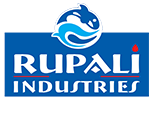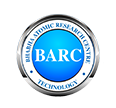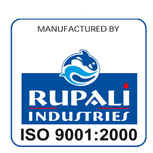B Nova UF BARC Teachnology
Bhabha Atomic Research Centre (BARC) has developed several water purification devices and desalination techniques, as a part of it's research and development efforts towards the betterment of society. These technologies or products are backed by robust design concepts and pilot plant studies, which can cover the needs of households, communities, industries and metropolis.
A novel idea of coating polysulfone on a porous candle resulted in the development of a "Point of Use" water purifier.
Unlike other devices available in the market which only deactivates the micro-organisms, this device physically eliminates them. This device does not require any electricity or any addition of chemicals.
Removal of suspended particulates, color and odor are additional benefits available in these units. A typical unit provides nearly sufficient water per day at 3 meters pressure head and can withstand up to 40 psig pressure (2.76 bar). These water purifiers of low capacity and zero operating cost are meant to satisfy the domestic need for safe water. The technology has been transferred to company for commercial deployment, of UF based water purification technologies for providing safe drinking water in villages is shown in the picture given below. The required minimum head is created by keeping the tanks at an elevation and filling the contaminated water in the tanks with the help of hand pumps. Multiple candles system also is designed for community level water purification.
Devices based on ultra filtration membrane can physically remove bacteria, suspended solids and high molecular weight organics without the use of electricity, at tap water pressure, mainly by sieving (size-exclusion) mechanism. The useful life of this membrane device depends on configuration of the membrane. Most of the existing membrane devices employ UF membrane in either spiral, capillary or hollow fibre form. A drawback with these configurations is that they cannot be completely cleaned physically and due to deposition of suspended solids, their output keeps on decreasing with time. The on-line domestic water purifier technology developed at BARC's Desalination Division is based on this ultrafiltration membrane in cylindrical configuration, which is free from these limitations. This device is not only much less expensive but superior to existing devices in many ways. Some of the salient features are:
(i) Very effective as it removes bacteria to the extent of > 99.99% (4 log scale).
(ii) Removes complete turbidity and produces crystal clear water.
(iii) Works in a dead end device so not a single drop of water is wasted.
(iv) Does not need electricity or addition of any chemical.
(v) Provision to remove organic or colouring material if they are present in feed.
(vii) Highly strong (both chemically and mechanically) membranes giving high life (3-5 years).
(viii) Almost maintenance free except occasional cleaning of suspended solids which deposits on membrane surface and this does not take more than 3-4 minutes time.
It is almost maintenance free except occasional cleaning of membrane surface. Due to candle like cylindrical configuration of ultra filtration membrane, they can be easily cleaned and reused number of times unlike ultra filtration membrane of hollow fibre, capillary or spiral configuration (which cannot be cleaned completely and has to be replaced after some time).
The device physically filters out bacteria--there will not be any dead or decayed bodies of bacteria in purified water unlike ultraviolet or chemical addition devices. The device is very compact and portable. It can be easily installed and needs no electricity or addition of any chemical


